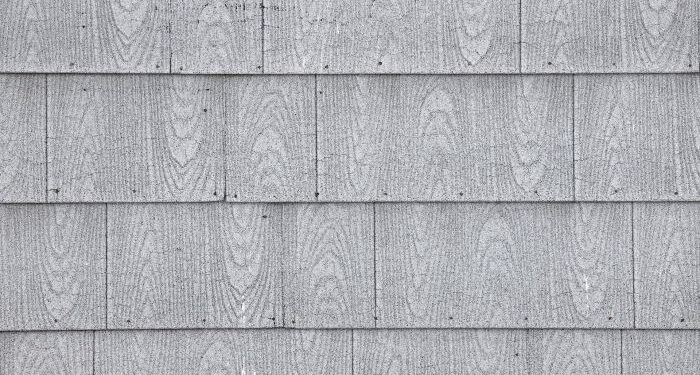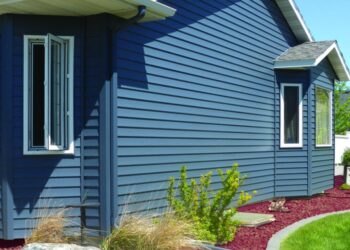Delving into asbestos shingles, this introduction immerses readers in a unique and compelling narrative. Asbestos shingles, once a popular roofing material, have a complex history intertwined with construction and health risks. Let's uncover the intriguing details surrounding this controversial topic.
As we journey through the characteristics, health risks, and disposal of asbestos shingles, we will gain a deeper understanding of their impact on the roofing industry and beyond.
Introduction to Asbestos Shingles
Asbestos shingles are roofing materials made from a combination of asbestos fibers and cement. These shingles were commonly used in construction due to their durability and fire-resistant properties.
History of Asbestos Shingles
Asbestos shingles became popular in the early 20th century as a cost-effective and long-lasting roofing option. The use of asbestos in construction peaked in the mid-20th century before its health risks were widely known.
Characteristics of Asbestos Shingles
- Fire resistance: Asbestos shingles are highly resistant to fire, making them a popular choice for roofing in areas prone to wildfires.
- Durability: Asbestos shingles have a long lifespan and require minimal maintenance, making them a cost-effective option for homeowners.
- Weather resistance: These shingles can withstand harsh weather conditions such as heavy rain, wind, and snow.
Common Uses of Asbestos Shingles
Asbestos shingles were commonly used in residential buildings, schools, and commercial structures. They can still be found on historic homes and buildings constructed before the 1980s.
Health Risks Associated with Asbestos Shingles
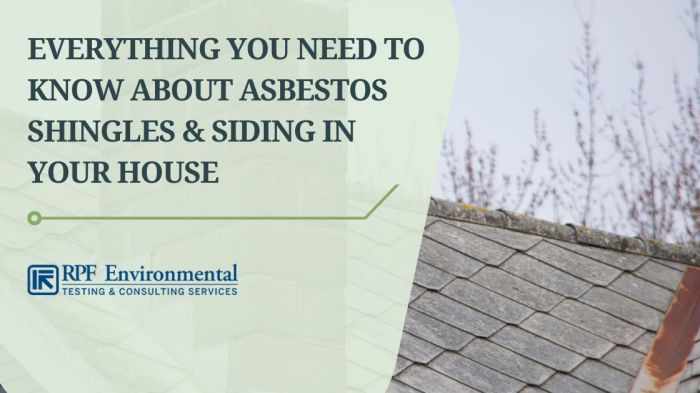
Asbestos shingles, while durable and fire-resistant, pose serious health risks due to the presence of asbestos fibers in their composition. When these shingles deteriorate or are disturbed during renovation or repair work, asbestos fibers can be released into the air, leading to potential exposure and subsequent health issues.
Release of Asbestos Fibers
Asbestos fibers can become airborne when asbestos-containing shingles are cut, drilled, or otherwise disturbed. These microscopic fibers can linger in the air for extended periods, making it easy for individuals to inhale or ingest them unknowingly.
Respiratory Diseases
Exposure to asbestos fibers, whether from shingles or other sources, can result in serious respiratory diseases such as asbestosis, lung cancer, and mesothelioma. These conditions often have a long latency period, with symptoms manifesting years or even decades after initial exposure.
Regulations and Safety Measures
To mitigate the health risks associated with asbestos shingles, regulatory bodies have established guidelines for their safe removal and disposal. It is crucial for individuals working with asbestos-containing materials to adhere to these regulations, which typically involve using proper protective equipment, containment measures, and disposal protocols to prevent exposure to asbestos fibers.
Removal and Disposal of Asbestos Shingles
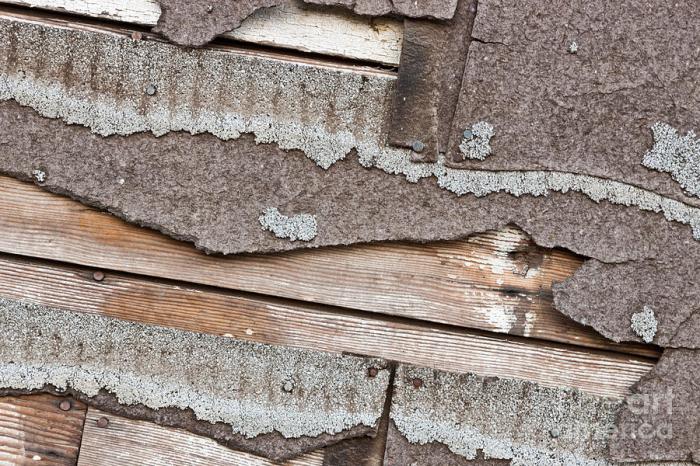
When it comes to dealing with asbestos shingles in a building, proper identification, removal, and disposal are crucial to prevent health risks.
Identifying Asbestos Shingles
Identifying asbestos shingles in a building involves inspecting the age of the building, as asbestos was commonly used in construction materials before its ban. A professional asbestos inspector can take samples for testing to confirm the presence of asbestos.
Safely Removing Asbestos Shingles
- Ensure the work area is properly sealed off to prevent asbestos fibers from spreading.
- Wear protective gear such as disposable coveralls, gloves, and a respirator.
- Moisten the shingles to minimize the release of fibers during removal.
- Carefully remove the shingles without breaking them to minimize fiber release.
- Clean the area thoroughly using wet methods and HEPA vacuum to remove any remaining asbestos fibers.
Proper Disposal Methods
- Double bag the asbestos-containing materials in leak-tight bags labeled with appropriate warnings.
- Dispose of the bags at designated hazardous waste disposal sites following local regulations.
- Do not dispose of asbestos-containing materials in regular household waste bins.
Qualified Professionals for Asbestos Shingle Removal
It is essential to hire licensed asbestos removal professionals who are trained and equipped to safely handle asbestos materials. These professionals follow strict guidelines to ensure the safe removal and disposal of asbestos shingles.
Alternatives to Asbestos Shingles
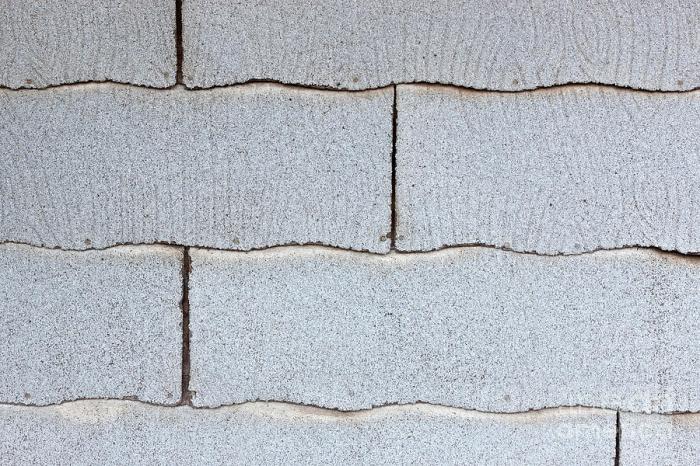
When looking for alternatives to asbestos shingles, there are several roofing materials available in the market that can replace them. Each alternative comes with its own set of benefits and drawbacks, so it's important to consider your specific needs and preferences before making a decision.
Metal Roofing
Metal roofing has gained popularity as a durable and long-lasting alternative to asbestos shingles. It is lightweight, fire-resistant, and recyclable. However, metal roofs can be noisy during rainstorms and may dent easily in hail-prone areas.
Asphalt Shingles
Asphalt shingles are a common choice for residential roofing due to their affordability and ease of installation. They come in a variety of colors and styles, making them a versatile option. However, asphalt shingles have a shorter lifespan compared to other materials and may require more maintenance over time.
Wood Shingles
Wood shingles offer a natural and rustic look to a building, adding charm and character. They are also eco-friendly and biodegradable. However, wood shingles require regular maintenance to prevent rot, mold, and insect infestations. Additionally, they are not as fire-resistant as other materials.
Environmental Impact
Using asbestos shingles can have a negative impact on the environment due to the release of harmful fibers during installation, maintenance, and disposal. Modern alternatives like metal, asphalt, and wood shingles are more environmentally friendly as they are recyclable, energy-efficient, and sustainable.
Choosing non-asbestos roofing materials can help reduce the carbon footprint and promote a greener building industry.
Examples of Modern Buildings
Many modern buildings have opted for non-asbestos roofing materials to enhance sustainability and energy efficiency. For instance, the Bullitt Center in Seattle features a metal roof with solar panels, reducing energy consumption and promoting renewable energy sources. Similarly, the Edge in Amsterdam showcases a green roof with vegetation, providing natural insulation and improving air quality in the urban environment.
Wrap-Up
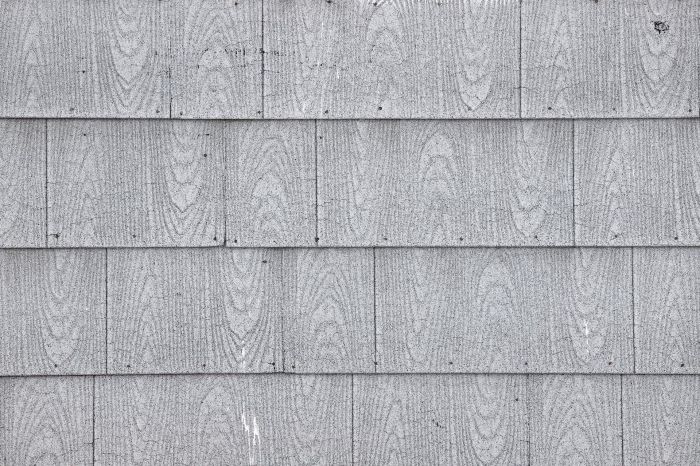
In conclusion, the discussion on asbestos shingles sheds light on the importance of proper handling and awareness of this hazardous material. From health risks to removal processes, the conversation surrounding asbestos shingles continues to evolve as we prioritize safety and environmental concerns.
Answers to Common Questions
What are the health risks associated with asbestos shingles?
Exposure to asbestos fibers from shingles can lead to serious respiratory diseases such as lung cancer and asbestosis.
How can asbestos shingles be safely removed?
It is crucial to hire professionals qualified in asbestos removal to safely handle and dispose of asbestos shingles following strict guidelines.
What are some alternatives to asbestos shingles?
Modern alternatives like metal, asphalt, and wood shingles provide safer options with reduced health risks and environmental impact compared to asbestos shingles.

